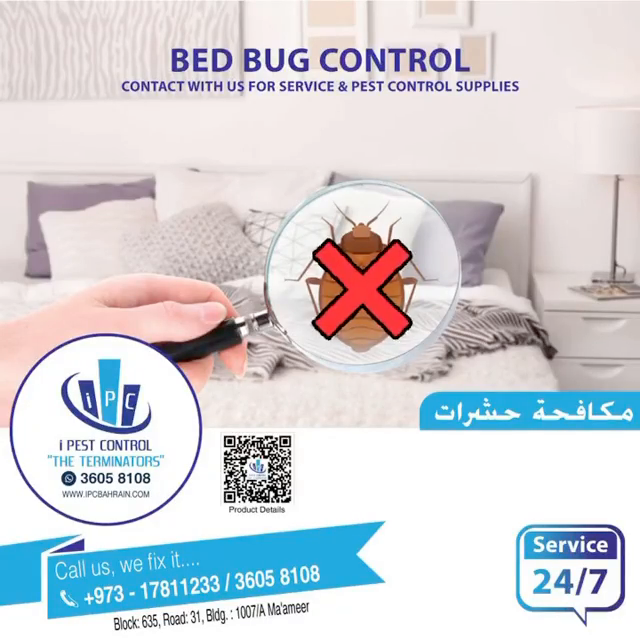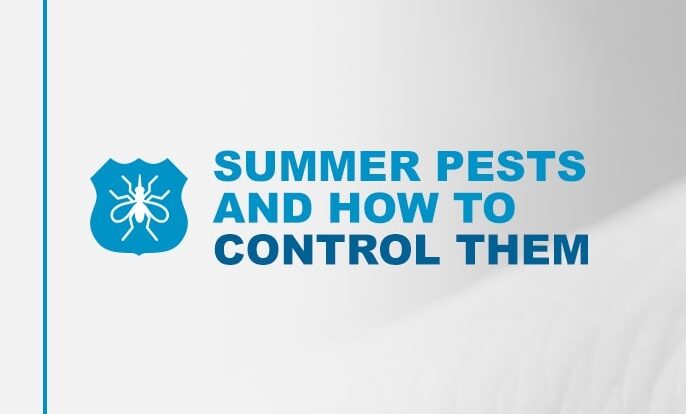
Removing Bedbugs
Bedbugs measure just 5 millimeters across—smaller than a pencil eraser. These bugs are smart, tough, and they reproduce quickly. Bedbugs know where to hide to avoid detection, they can live for months between meals, and a healthy female can lay 500 eggs in her lifetime.
Fortunately, you can get rid of bedbugs. Be patient as removing bedbugs often takes some time and effort. You may have to try a few different chemical and non-chemical approaches, especially if you have a large infestation.
Certain factors can make bedbugs harder to remove. You may have a tougher time ridding your home of them if you have a lot of clutter, or you travel often and bring new bedbugs home in your luggage.
If you can’t rid your home on your own, you may have to call in a professional exterminator like i Pest Control. Read on for a step-by-step guide on getting rid of bedbugs.
Step 1: Identify all infested areas
If you’ve got bedbugs, you want to find them early before they start to reproduce. It’s much easier—and cheaper—to treat a small infestation than a big one. Yet smaller infestations can be harder to detect.
Bedbugs’ small, narrow bodies enable them to squeeze into tiny spots—like the seams of a mattress or couch, and the folds of curtains.
Also look for them in places like these:
- near the tags of the mattress and box spring
- in cracks in the bed frame and headboard
- in baseboards
- between couch cushions
- in furniture joints
- inside electrical outlets
- under loose wallpaper
- underneath paintings and posters on the walls
- in the seam where the wallpaper and ceiling meet
Use a flashlight and magnifying glass to go over all of these areas.
You can spot bedbugs by these signs:
- Live bedbugs, which are reddish and about ¼-inch long
- Dark spots about the size of a period—these are bedbug droppings
- Reddish stains on your mattress from bugs that have been crushed
- Small, pale yellow eggs, egg shells, and yellowish skins that young bedbugs shed
Once you find a bedbug, put it in a sealed jar along with 1 teaspoon of rubbing alcohol. Other types of bugs can look a lot like bedbugs. If you’re not sure what type of bug you’ve found, Contact iPC to identify.
Step 2: Contain the infestation
Once you know you have bedbugs, you need to keep them contained so you can get rid of them. A quick and easy way to trap bedbugs is with your vacuum. Run the vacuum over any possible hiding places.
This includes your:
- bed
- dresser
- carpets
- electronics (like TVs)
Seal up the vacuumed contents into a plastic bag and throw it away. Then thoroughly clean out the vacuum.
Seal up all your linens and affected clothes in plastic bags until you can wash them. Then put them on the highest possible temperature setting in the washer and dryer. If an item can’t be washed, put it in the dryer for 30 minutes at the highest heat setting.
Anything that can’t be treated in the washer and dryer, place in a plastic bag. Leave it there for a few months, if possible, to make sure all the bugs die. If you can’t clean furniture, throw it away. Tear it up first and spray paint the words “bedbugs” on it so no one else tries to take it home.
Step 3: Prep for bedbug treatment
Before you start treating your home, do a little prep work to maximize your odds of success. Make sure all your linens, carpets, drapes, clothing, and other hiding places have been cleaned or thrown out (see Step 2).
Next, get rid of bedbug hiding places. Pick up books, magazines, clothes, and anything else that’s lying on your floor and under your bed. Throw out whatever you can. Don’t move items from an infested room to a clean one—you could spread the bugs.
Seal up any open areas. Glue down loose wallpaper. Caulk cracks in furniture and around baseboards. Tape up open electrical outlets. Finally, move your bed at least 6 inches away from the wall so bedbugs can’t climb on.
Step 4: Kill the bedbugs
Home cleaning methods
You can first try to remove bedbugs without chemicals. These bugs are pretty easy to kill with high heat, 115°F (46°C), or intense cold , 32°F(less than 0°C
Here are a few ways to treat bedbugs using these methods:
- Wash bedding and clothes in hot water for 30 minutes. Then put them in a dryer on the highest heat setting for 30 minutes.
- Use a steamer on mattresses, couches, and other places where bedbugs hide.
- Pack up infested items in black bags and leave them outside on a hot day (95 degrees) or in a closed car. In cooler temperatures, it can take two to five months to kill sealed-up bugs.
- Put bags containing bedbugs in the freezer at 0°F (-17°C). Use a thermometer to check the temperature. Leave them in there for at least four days.
Once you’ve cleaned all visible bedbugs, make the area inhospitable for their friends. Place bedbug-proof covers over your mattress and box spring. Zip these covers up all the way. Bugs that are trapped inside will die, and new bugs won’t be able to get in.
If these methods don’t wipe out all the bugs, you may need to try an insecticide.
Non-chemical and chemical treatments
Here are a few types of insecticides you can try:
- Pyrethrins and pyrethroids are the most common chemical used to kill bedbugs. Yet some bedbugs have become resistant to them.
- Pyrroles like chlorfenapyr kill bedbugs by disrupting their cells.
- Neonicotinoids are man-made versions of nicotine. They damage the bugs’ nervous system. This type of chemical works on bedbugs that have become resistant to other pesticides.
- Dessicants are substances that destroy the bugs’ protective outer coating. Without this coating, the bugs dry out and die. Two examples of dessicants are silica aerogel (Tri-Die and CimeXa) and diatomaceous earth. The advantage to dessicants is that bedbugs can’t become resistant to them, but they work slowly. These products can take a few months to kill off all the bugs.
- Foggers or bug bombs kill bedbugs, but they can’t get into cracks and crevices where these bugs hide. They can also be toxic to humans if you use them incorrectly. Read the label carefully. Leave the room before you set off a fogger.
- Plant oil-based products like EcoRaider and Bed Bug Patrolare less toxic than chemical insecticides, and the work well against bedbugs.
Step 5: Monitor the affected areas
Bedbugs can take some time to wipe out. Before you can trust that your treatment has worked, you need proof that the bugs have moved on. Check the infested areas about once every seven days for signs of activity.
To make surviving bedbugs easier to spot, place bedbug interceptors under each leg of the bed. These devices will trap bedbugs before they can climb up into your bed. You may need to keep checking the interceptors for a full year.
Step 6: Retreat as needed
Bedbugs are hardy creatures. Just when you think you’ve wiped them out, you might spot them again. You may have to try a few different treatment methods to control the infestation. And if they still don’t go away, you’ll want to call in a professional exterminator.
Step 7: Get the pros involved
If you can’t wipe out bedbugs on your own, it’s time to get the pros involved. Pest control companies have the advantage of using chemicals and other treatments that aren’t available to you. They have insecticides that both kill bugs on contact, and that stay inside furniture and cracks to kill bedbugs in the long-term.
Step 8: Keep the bedbugs out
Take action – Contact iPC
Are You Looking for Sanitization/Disinfection Service or Pest Control Service in Bahrain?
To learn more about iPC Services options, or to get a free quote, give us a call today. iPC is here to help you 🙂 Contact Us Now…! 24/7 Service, Covering Whole Region of Bahrain.
Contact Us Today! ☎️ 17811233 ☎️ 36058108 (WhatsApp)

